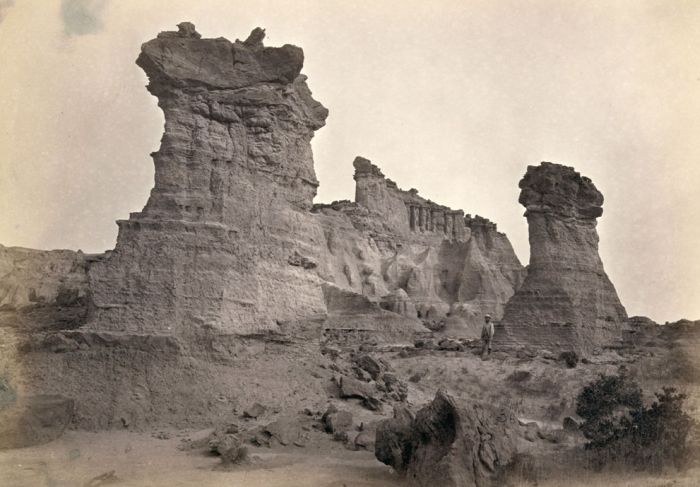|
|
History: American Old West, United States
|
The federal government even attempted to forest the prairies to make better use of undesirable land. Relying on the theory that planting trees would alter the climate enough to produce the rainfall need to sustain the forests long term, the government encouraged homesteaders to plant trees. When the "rain-follows-the-plow program" failed due to drought and pests, the federal government turned instead to more practical programs to develop irrigation, though large-scale irrigation projects came decades later. But by the 1870s, the large land giveaways raised concerns about the management of remaining public lands, particularly those of unique value such as the Grand Canyon and Yellowstone, and the conservation movement was born. In 1872, Yellowstone became the first national park in the United States (and in the world).
• Transcontinental railroad
The Pacific Railroad Act of 1862 finally hastened the transition of the transcontinental railroad from dream to reality. Existing rail lines, particularly belonging to the Union Pacific, had already reached westward to Omaha, Nebraska, about half way across the continent. The Central Pacific, starting in Sacramento, California, was extended eastward across the Sierras to link with the Union Pacific heading west. The two finally met at Promontory Summit, Utah on May 10, 1869. Leland Stanford, one of the prime backers of the Central Pacific, hammered the golden spike in triumph, linking the two lines. A cross-country trip was reduced from about four months to one week by the completion of the railroad.
Building the railroad required six main activities: surveying the route, blasting a right of way, building tunnels and bridges, clearing and laying the roadbed, laying the ties and rails, and maintaining and supplying the crews with food and tools. The work was highly labor intensive, using mostly plows, scrapers, picks, axes, chisels, sledgehammers, and handcarts. A few steam-driven machines, such as shovels, were employed as well. Each iron rail weighed 700 lb (320 kg). and required five men to lift. For blasting, they used gunpowder, nitroglycerine, and limited amounts of dynamite. The Central Pacific employed over 12,000 Chinese workers, 90 percent of the work force. The Union Pacific employed mostly Irishmen. The crews averaged about two miles (3 km) of new track per day but they were driven to do more. Each man lifted a few tons a day of weight. In the haste to complete the project, engineering errors caused collapsing roadbeds and badly graded curves. Substandard rails and ties were also serious problems. The defects became even more apparent with freight runs, causing many accidents, and the line eventually required millions of dollars to repair and replace bad track.
|
|









